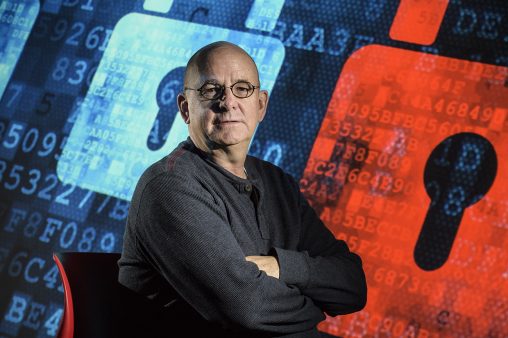Excerpt

Vance Saunders, director of Wright State’s cybersecurity program, will managed the Assured Digital Microelectronics Education & Training Ecosystem program.
A local university will lead a team of six Ohio institutions on a nearly $30 million defense project. The effort will bring new jobs, facilities and curriculum to the university.
Wright State University won an Air Force contract titled “Assured Digital Microelectronics Education & Training Ecosystem” (ADMETE). The deal is worth over $29.75 million for three years, with $9 million released in the first year.
The contract, awarded in early September, seeks to develop a pipeline of trained undergraduate engineering students with the skills to design and develop digital microelectronic devices and systems. The goal is to create a seamless environment of career-long education and training and a timely completion of educational credentials, overcoming any institutional barriers, curricular differences and policy hurdles.
The current ADMETE team consists of Wright State, the University of Akron, Youngstown State, Ohio University, the University of Toledo and Lorain County Community College. As the program grows, other academic institutions are expected to become part of the team.
The program is being managed by Wright State under the direction of Vance Saunders, director of the university’s cybersecurity program in the College of Engineering and Computer Science.
“These computer chips provide the processing power for everything we’re doing in technology right now,” Saunders said. “Most of them are manufactured outside the United States, and we don’t have the infrastructure to manufacture them all ourselves. We need to be able to assess the trustworthiness of this hardware.”
The contract adds to Wright State’s workforce development efforts, and extends its relationship with the Air Force. The award also expands the ongoing research and development of innovative, assured and trusted microelectronics technologies being conducted at Wright State, Youngstown State and the University of Akron.
According to the Department of Defense, commercial state-of-the-art foundries for defense-related, application-specific integrated circuit development may not meet security and trusted computing requirements.
So the Air Force, under the direction of the Air Force Research Laboratory at Wright-Patterson Air Force Base, is working to ensure that microelectronics systems from commercial foundries are trusted, assured and protected. The effort applies to currently fielded microelectronics no longer in production, microelectronics in production and next-generation, cutting-edge microelectronics in development.
Meeting the demand requires a thriving workforce of digital design engineers with expertise in assured and trusted microelectronic systems. The Air Force says current academic programs across the country are not meeting this need.
“No one has been putting the infrastructure in place to take the results of all this research and train the next-generation workforce in how to use it,” Saunders said.
To populate the pipeline, the Air Force plans to use innovative means in outreach and recruitment, and forge close partnerships between institutions of higher education and regional employers.
“There is a lot of work to do,” Saunders said. “And there will be a lot of involvement with government and industry.”
He said the goal is to create a system in which graduating high school seniors would be able to take courses at technical schools, two- and four-year colleges, work as interns with local businesses, and have it all count toward a degree in digital electronics design and development.
The program would likely be part of an electrical engineering, computer engineering or related degree.
Saunders said the funding will be used to hire faculty with expertise in microelectronics, develop a curriculum exciting to students, create new lab spaces and also conduct research into assured and trustworthy microelectronics solutions.
“And there will be a huge marketing effort,” he said. “We need to be screaming about this to every high school student in the state, letting them know about the fun and exciting opportunities in the field of digital microelectronics.”
View the original story at bizjournals.com

 Heavy metal learning
Heavy metal learning  State grants to bolster Wright State’s electric vehicle and advanced manufacturing training for students
State grants to bolster Wright State’s electric vehicle and advanced manufacturing training for students  Wright State partners with local universities, hospitals to expand mental health care for students
Wright State partners with local universities, hospitals to expand mental health care for students  Wright State students, first responders team up for Halloween event
Wright State students, first responders team up for Halloween event  Explore Wright State Day welcomes hundreds of future Raiders
Explore Wright State Day welcomes hundreds of future Raiders 